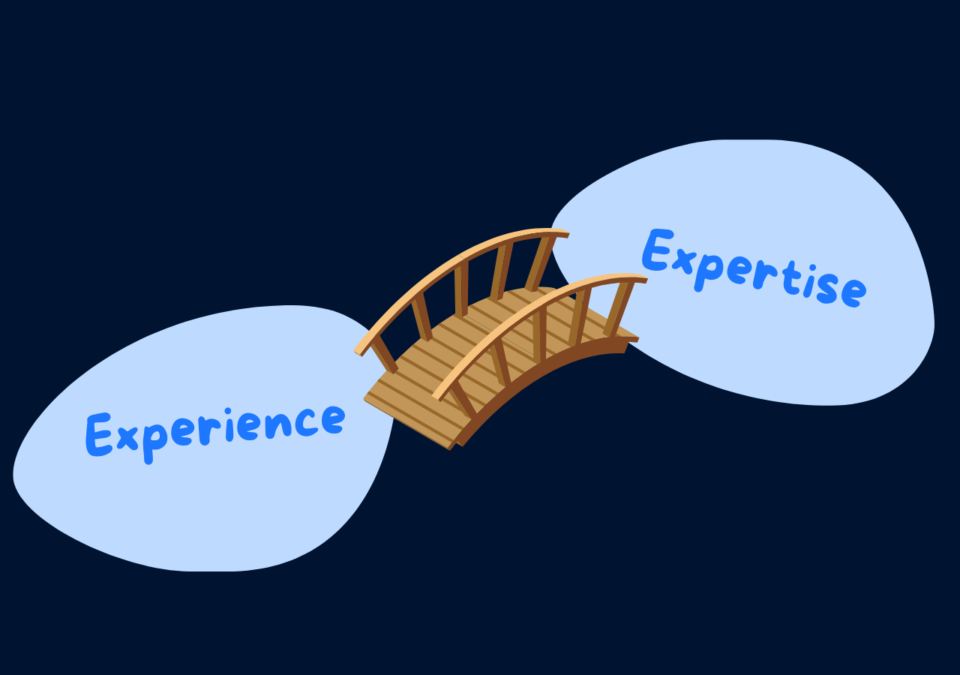Recently, I came across the website of an investment management firm that said, “Our principals have over 250 years of combined experience.” A good notion – that’s a lot of experience, but does it mean that they are experts?
Is an investment manager with 40 years of experience automatically more of an expert than one with 10 years? When evaluating two investment management firms, should I pick the one that has 1,000 years of combined experience over the one with a mere 250 years?
At first blush, it would seem that, yes, we should value those with more experience over those with less. You probably don’t want a surgeon to operate on you who is doing the procedure for the first time. Right? Experience matters.
But it takes more than mere experience to be an expert.
Experience Alone Doesn’t Lead to Expertise
In his book Outliers, Malcolm Gladwell popularized the so-called “10,000-hour rule,” which is based on research compiled by Florida State University professor Anders Erickson. The 10,000-hour rule posits that mastery comes from practicing something for 10,000 hours. But mindless practice isn’t a path to expertise. Instead, “deliberate practice” is necessary for mastery.
Erickson, writing in the Harvard Business Review, noted that “living in a cave does not make you a geologist. Not all practice makes perfect. You need a particular kind of practice—deliberate practice—to develop expertise. When most people practice, they focus on the things they already know how to do. Deliberate practice is different. It entails considerable, specific, and sustained efforts to do something you can’t do well—or even at all.”
Thus, doing the same thing over and over again without feedback doesn’t lead to greatness. Instead, constructive and often painful feedback (whether from a coach or circumstance) is required. It entails trying new things and learning from our mistakes.
A way to think about it is that experience is necessary for expertise but is not sufficient on its own. Experience only comes with time, but expertise requires using that time well.
Deliberate Practice Is Challenging in Investing
In most areas, it’s simple to figure out what deliberate practice looks like. In sports, athletes have coaches who give feedback about how to improve. For a writer, deliberate practice means writing a lot and getting constructive feedback from an editor. Scientists perform experiments, and the success and failure of these experiments add to their knowledge and expertise. A chef will experiment with different recipes and ingredients and seek feedback to improve their dishes.
When it comes to investing, deliberate practice is more difficult because of the outsized role luck has in investment results. Skill matters, but a highly skilled stock picker can have bad outcomes due to bad luck, and someone with no stock-picking skill can do well due to good luck. It’s hard to tell what works well and what doesn’t due to randomness and chance. Plus, the markets are constantly adapting and changing, so lessons from one period don’t always apply to the next. It’s comparable to what it would be like for a surgeon if human anatomy cycled through changes or for a chess master if the rules of chess changed without warning.
Developing Investment Mental Models
Given the role of randomness and luck and the changing nature of the financial markets, how do investors develop expertise from their experience? What does deliberate practice look like?
The answer lies in developing a latticework of investment mental models to serve as guideposts to help you make the best possible decisions in the face of uncertainty.
Mental models are conceptual structures that help us understand how the world works. They are bits of knowledge or wisdom we file away in our heads to help us make decisions. Warren Buffett’s business partner Charlie Munger is the pioneer of the concept. Here’s how he described mental models in a 1994 speech at USC’s business school:
“What is elementary, worldly wisdom? Well, the first rule is that you can’t really know anything if you just remember isolated facts and try to bang ’em back. If the facts don’t hang together on a latticework of theory, you don’t have them in a usable form. You’ve got to have models in your head . . . You’ve got to have multiple models—because if you just have one or two that you’re using, the nature of human psychology is such that you’ll torture reality so that it fits your models, or at least you’ll think it does . . . 80 or 90 important models will carry about 90 percent of the freight in making you a world-wise person.”
In his talk, Munger was referring to mental models that help us make business and personal decisions, but the concept of mental models is equally applicable to investing.
A well known example of an investment mental model is Warren Buffett’s simple and straightforward advice that successful investing requires being “fearful when others are greedy, and greedy when others are fearful.” This is a model to apply when you feel investment FOMO (fear of missing out) when the stock market is soaring and investors are euphoric. It also reminds you that the best time to invest is when the market is down, and everyone is panicking.
Great investors create a latticework of mental models by:
- Learning from their mistakes. Keeping a decision journal is a best practice for evaluating decisions and learning from mistakes.
- Observing what works well in different market cycles.
- Learning from other investors (both successful and unsuccessful ones).
- Seeking out wisdom by reading books and academic studies about investing.
Great investors take these experiences and develop a latticework of mental models to apply in appropriate situations. This is what deliberate practice looks like for investors.
The Bottom Line
Experience is correlated with expertise but they are distinct concepts. An investment manager with 10 years of deliberate practice will have more expertise than one with 40 years of just doing the same thing over and over again. In the investment realm, using experience to build a latticework of mental models is essential for success.
Are you interested in learning more about how to develop a latticework of investment mental models? Keep a lookout for my book “The Uncertainty Solution” which will be published in the spring. For more information, visit johnmjennings.com.



